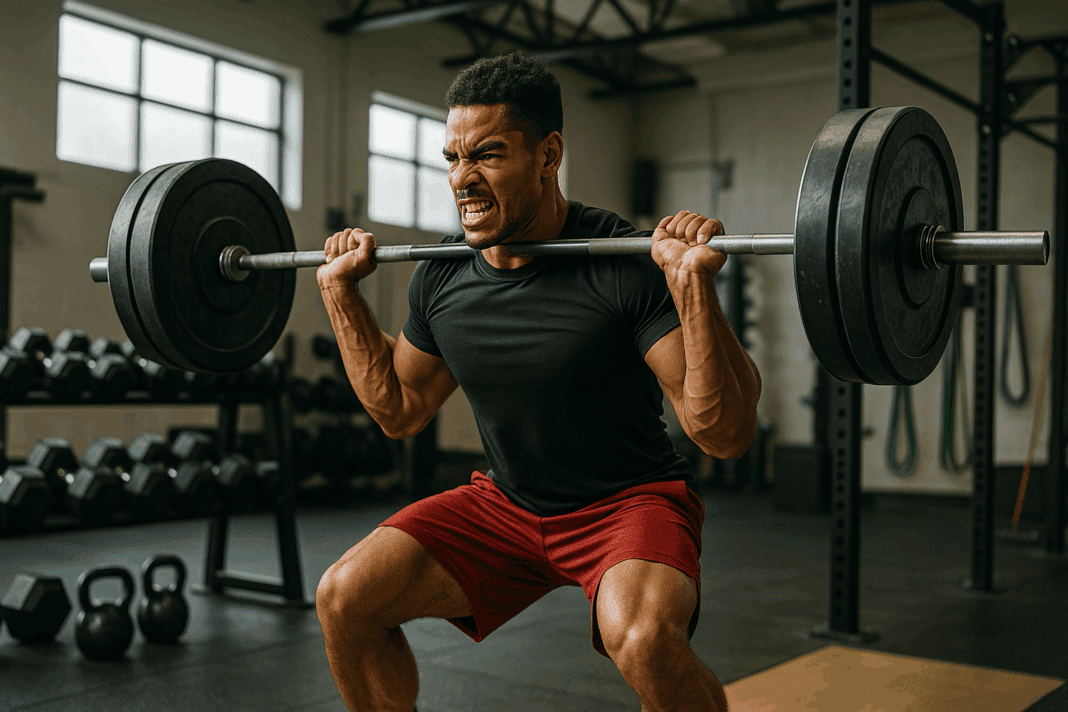Athletes across all levels and disciplines understand that raw talent alone is no longer enough to gain a competitive edge. What separates exceptional athletes from the average is a dedication to science-backed, progressive training methodologies that enhance both physical capabilities and mental fortitude. At the core of such development lies strength and conditioning training for athletes—a multifaceted approach to boosting power, resilience, and long-term performance. In the context of modern sports and human performance, this type of training not only reduces injury risk but serves as a catalyst for maximizing athletic potential.
From football fields to tennis courts, from long-distance runners to sprinters, strength and conditioning programs are fundamental in preparing athletes for the specific demands of their sport. This article explores the physiological principles, strategic applications, and real-world benefits of adopting a holistic strength workout for athletes. It further explains how this integrated practice can fuel endurance, sharpen agility, and deliver measurable improvements that extend beyond the weight room.
You may also like: How to Increase Stamina and Endurance Naturally: Smart Training Tips and Nutrition Habits That Support Cardiovascular Fitness
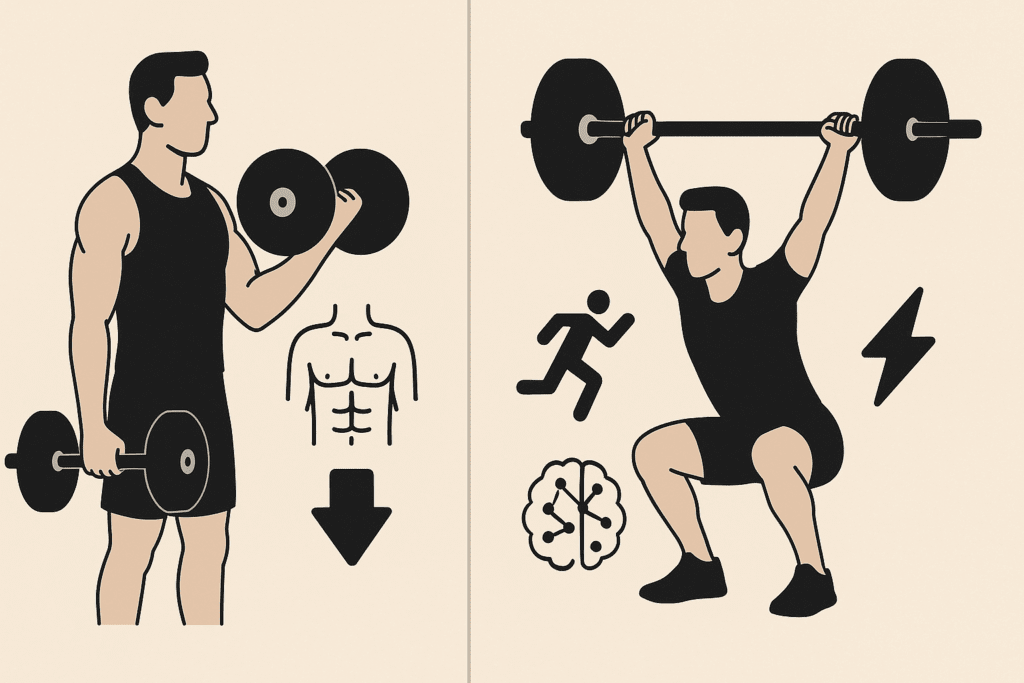
Understanding the Foundations of Strength and Conditioning
Strength and conditioning training is more than just lifting weights or following a generic exercise routine. It encompasses a comprehensive understanding of biomechanics, exercise physiology, and performance psychology. The central goal is to enhance an athlete’s ability to produce force and sustain effort over time while minimizing the likelihood of overtraining or injury. To this end, strength exercises for athletes are tailored according to sport-specific movement patterns, positional requirements, and individual strengths and weaknesses.
A critical distinction must be made between traditional weight training and a nuanced strength training for athletes. Whereas general weightlifting often focuses on hypertrophy and aesthetics, athletic strength training prioritizes movement efficiency, power output, neuromuscular coordination, and energy system development. Functional strength—the kind that translates to better performance on the field or court—requires integrated training strategies that challenge the athlete in dynamic and relevant ways.
Periodization is a fundamental concept in designing a strength and conditioning program. It involves organizing training into specific cycles or phases, each with distinct goals such as hypertrophy, strength, power, or peaking. This approach not only ensures progression but also facilitates recovery and adaptation. For example, an offseason phase may focus on foundational strength and tissue integrity, while a preseason phase emphasizes sport-specific power and anaerobic conditioning.
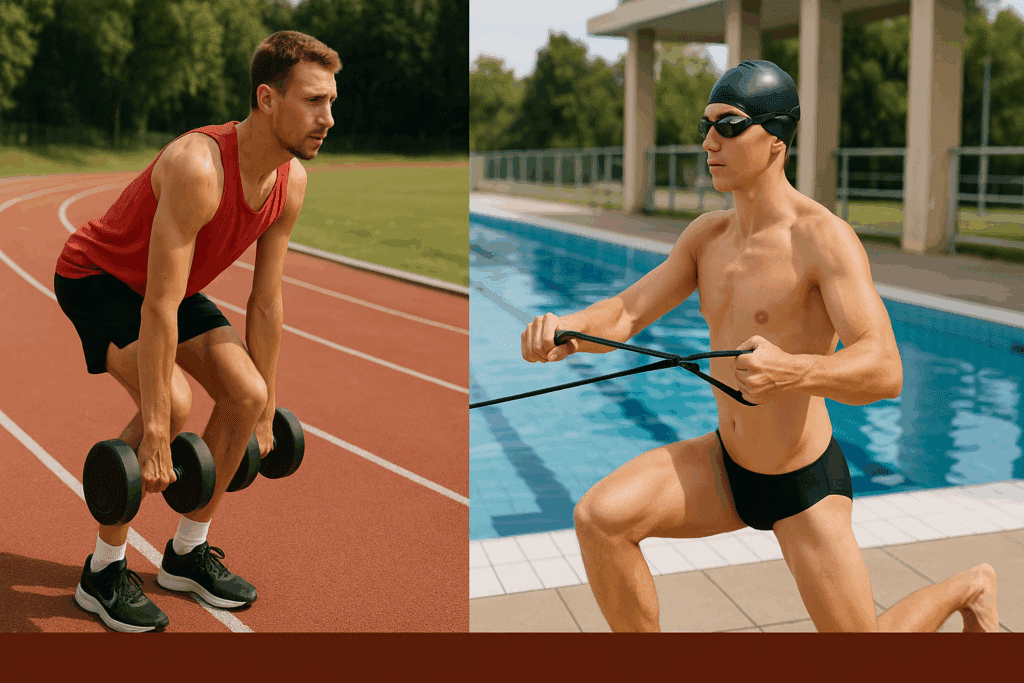
The Role of Strength Training in Enhancing Athletic Endurance
Contrary to the outdated belief that strength training diminishes endurance, modern research supports the integration of resistance work to improve stamina and aerobic efficiency. Strength and conditioning training for athletes enhances muscular endurance by improving the oxidative capacity of muscle fibers, increasing mitochondrial density, and promoting energy system synergy. In short, athletes who are stronger can sustain submaximal efforts for longer periods with reduced fatigue.
Distance runners, for instance, benefit from targeted strength workouts that address the posterior chain—hamstrings, glutes, and lower back—to improve stride economy and reduce ground contact time. Similarly, swimmers and cyclists incorporate resistance training to stabilize joints, improve posture, and increase power per stroke or pedal revolution. In each case, the proper implementation of strength exercises for athletes contributes directly to the endurance and longevity of athletic performance.
Moreover, fatigue resistance is not merely a product of cardiovascular fitness; it is closely tied to neuromuscular resilience. Weight training for athletes helps in reinforcing motor patterns, enhancing intermuscular coordination, and maintaining form under stress—factors that are critical when performance is extended over long durations or during competition.
Sport-Specific Applications and Adaptive Programming
One of the most compelling aspects of strength training for athletes is its adaptability. No two sports are identical, and even within the same discipline, individual roles demand different physical attributes. A goalkeeper requires explosive lateral movement, while a midfielder needs continuous aerobic capacity blended with brief sprints and directional changes. Recognizing these distinctions is key to effective strength and conditioning programming.
Strength exercises for athletes are chosen not only for their effectiveness in developing muscle strength but for their relevance to sport-specific movements. Olympic lifts such as cleans and snatches improve total-body power and rate of force development, which are essential for sprinters and jumpers. Plyometric exercises like depth jumps and bounding drills develop reactive strength, beneficial for sports involving rapid change of direction. Meanwhile, unilateral exercises (such as single-leg Romanian deadlifts) address imbalances and promote coordination, helping prevent injury and boost efficiency.
An often overlooked element is the role of mental conditioning within strength and conditioning. Athletes who train under progressive overload and task-specific fatigue learn to manage discomfort and maintain focus—skills that carry over into competition. Coaches and performance specialists must integrate mindset training into strength programs to promote resilience, confidence, and psychological endurance.

The Science Behind Muscle Adaptation and Recovery
Training without adequate recovery is counterproductive, and nowhere is this more evident than in strength and conditioning for athletes. The process of muscle adaptation relies on a carefully managed balance between stress and recovery. Microtears induced by weight training must be repaired through sleep, nutrition, hydration, and active recovery protocols to elicit positive adaptation.
Advanced strength workout strategies utilize concepts such as progressive overload, variation, and autoregulation to optimize results without overstressing the athlete. For instance, autoregulatory training adjusts load and volume based on daily readiness, allowing athletes to train intensely while minimizing injury risk. Deload weeks and low-intensity recovery sessions are essential components that foster long-term progress.
Equally important is the integration of mobility and flexibility work into the overall training scheme. A strength and conditioning program that ignores range-of-motion limitations or movement asymmetries may result in performance plateaus or chronic injury. Dynamic stretching, myofascial release, and controlled articular rotations help athletes maintain joint integrity and movement quality, supporting strength gains and facilitating faster recovery.
Youth and Collegiate Athlete Considerations
When designing strength training programs for youth and collegiate athletes, it is essential to consider both physical and psychological development. These athletes are in a crucial phase of motor learning, hormonal fluctuation, and skill acquisition. Overemphasis on heavy weight training for athletes at a young age may lead to burnout, improper movement patterns, or injuries that hinder long-term development.
Instead, the focus should initially be on movement competency, technical proficiency, and bodyweight mastery. Teaching proper squatting, hinging, pushing, and pulling mechanics forms the bedrock upon which more advanced resistance training can be built. Once these foundational patterns are ingrained, progressive strength workouts can be introduced with appropriate supervision and periodization.
Collegiate athletes often face the dual pressure of academic and athletic performance, which makes recovery and lifestyle factors even more critical. Strength and conditioning programs must account for these demands by implementing efficient, time-conscious training sessions that still deliver optimal stimulus. In this context, compound lifts, circuit training, and mobility integration offer a comprehensive yet manageable approach.
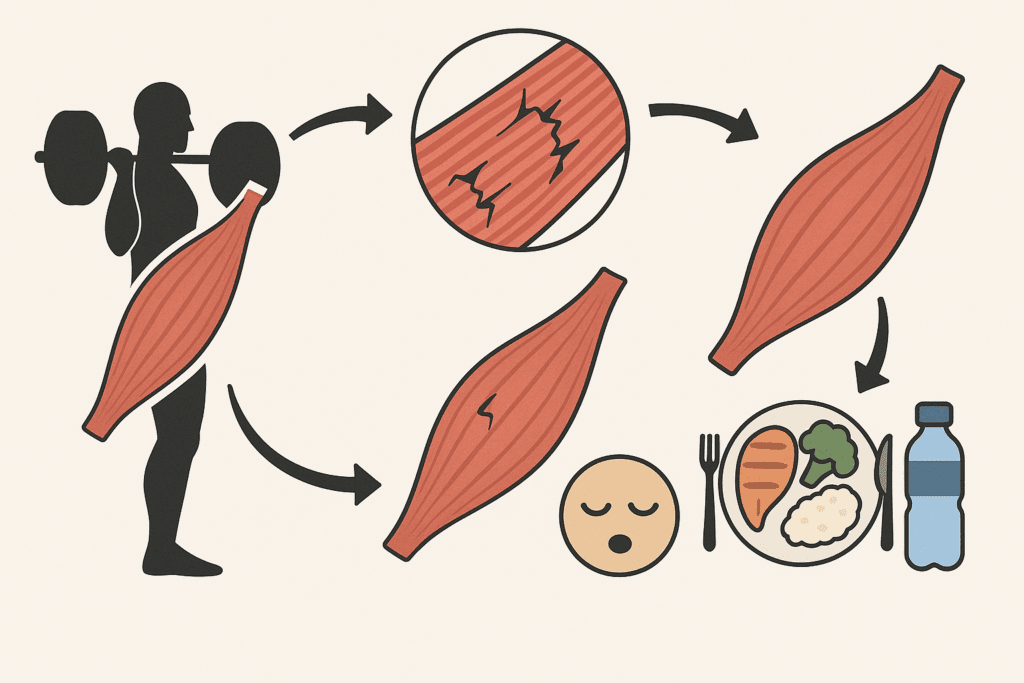
Injury Prevention and Longevity in Sports
Injury prevention is one of the most significant benefits of strength and conditioning training for athletes. Muscular imbalances, poor proprioception, and inadequate joint stability are all risk factors for non-contact injuries that can derail an athlete’s career. A well-structured strength training program addresses these issues systematically.
Injury-prevention strategies include incorporating eccentric loading exercises to strengthen tendons and ligaments, integrating proprioceptive drills for neuromuscular control, and emphasizing correct lifting technique across all movements. For example, Nordic hamstring curls have been proven effective in reducing hamstring strains in soccer players, while scapular stability exercises support shoulder health in overhead athletes.
Moreover, consistent monitoring and testing can help identify movement asymmetries or performance decrements that may signal the early stages of overtraining or potential injury. Technologies such as force plates, velocity-based training tools, and wearable sensors provide valuable data to tailor programs to the athlete’s current condition. Longevity in sports is as much about strategic planning as it is about physical preparation, and strength and conditioning offers the blueprint for sustainable high-level performance.
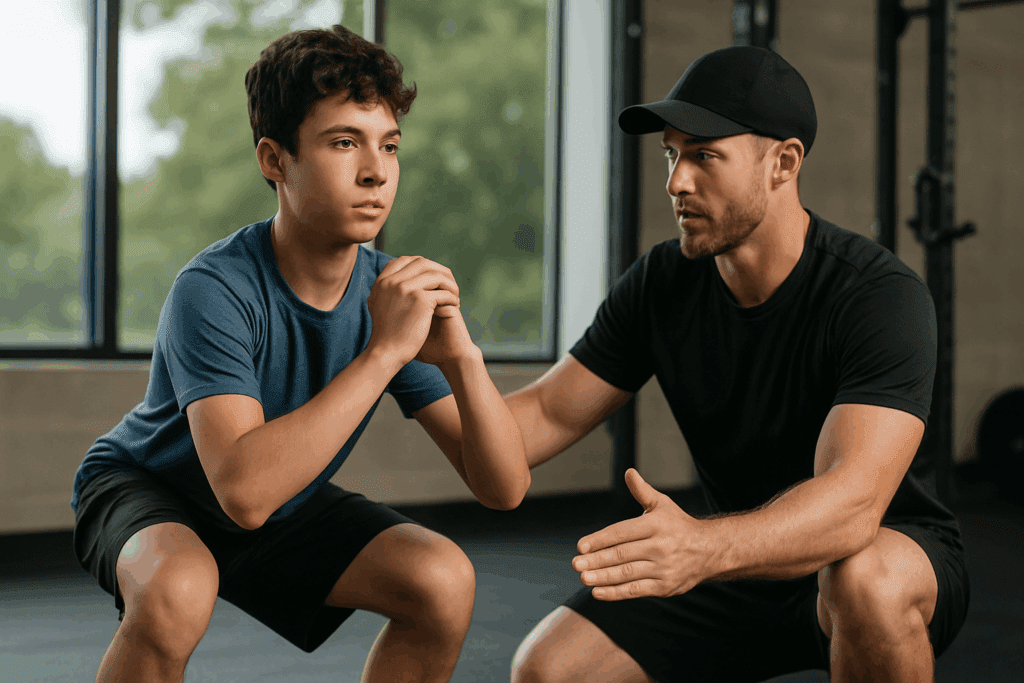
Building a Periodized Year-Round Training Plan
Developing a year-round strength and conditioning strategy requires more than simply alternating between bulking and cutting phases. True periodization considers the competitive calendar, travel schedules, academic obligations, and recovery needs. A comprehensive plan should include offseason, preseason, in-season, and postseason phases, each with distinct objectives and workloads.
In the offseason, the primary goal is to rebuild and improve base strength, correct imbalances, and enhance movement quality. Athletes may engage in higher training volumes, emphasizing general preparedness and aerobic base development. As the preseason approaches, training shifts toward power development, sport-specific drills, and anaerobic conditioning to mimic competition demands.
In-season training focuses on maintenance and injury prevention. Volume is reduced, but intensity remains relatively high to preserve adaptations. Mobility, recovery, and skill work are prioritized, especially during congested competition periods. The postseason serves as a time for regeneration and reflection, incorporating light training, rehabilitation, and strategic planning for the following cycle.
Flexibility within periodization allows for changes based on an athlete’s response to training, injury status, and evolving goals. A collaborative approach between coaches, athletic trainers, and performance specialists ensures that the plan remains relevant and effective throughout the year.
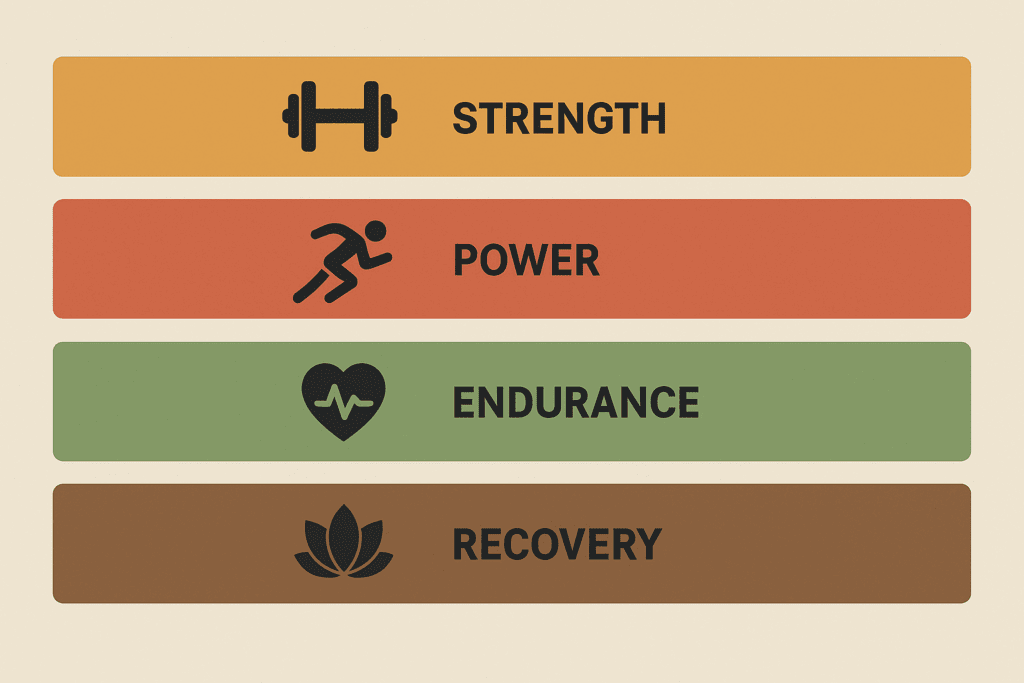
Nutrition and Supplementation to Support Strength Gains
Strength and conditioning success depends not just on training, but also on what fuels it. Nutrition plays a critical role in muscle repair, glycogen replenishment, and overall energy balance. Without a supportive dietary framework, even the best strength workout for athletes will yield suboptimal results.
Macronutrient balance is fundamental. Adequate protein intake is essential for muscle repair and synthesis, especially post-exercise. Carbohydrates provide the energy necessary for high-intensity efforts and should be tailored to the demands of the training cycle. Fats, often misunderstood, support hormonal health and inflammation control. Hydration, too, is paramount; even mild dehydration can impair strength, coordination, and cognitive function.
Supplements may support performance when used appropriately and under expert guidance. Creatine monohydrate, for example, is one of the most researched and effective supplements for increasing strength and power. Beta-alanine, caffeine, and branched-chain amino acids (BCAAs) also show promise in specific contexts. However, athletes must prioritize whole-food nutrition and use supplements to fill gaps, not replace meals.
Frequently Asked Questions (FAQ) – Strength and Conditioning for Athletes
What is the optimal frequency for incorporating strength workouts into an athlete’s weekly routine?
While training frequency depends on sport, season, and experience level, most athletes benefit from two to four weekly sessions dedicated to strength and conditioning training. High-performance athletes often use a periodized plan that intensifies during the off-season and shifts toward maintenance during the competition phase. A strength workout for athletes should balance volume and intensity to promote adaptation without impairing recovery or performance in skill-specific sessions. Recovery days between strength sessions allow the nervous system to recuperate while reducing the risk of overtraining. Coaches can refine frequency by monitoring load tolerance and athlete readiness through subjective and objective markers.
How does strength training support athletic skills like speed, agility, and coordination?
Strength training for athletes has a profound effect on neuromuscular efficiency, which is the foundation for explosive movements such as sprinting, cutting, and jumping. By enhancing motor unit recruitment and improving intermuscular coordination, strength training helps athletes generate force more efficiently and direct it effectively through space. It also increases joint stiffness and tendon strength, which contribute to better force transmission during rapid direction changes. Agility ladders and resisted sprints can be integrated within strength sessions to bridge the gap between gym performance and field application. For sports requiring high-speed transitions, tailored strength and conditioning training for athletes can unlock multidimensional gains in performance.
Is there a difference between hypertrophy and functional strength for athletes?
Yes, hypertrophy refers to muscle size increase, while functional strength focuses on the ability to produce and apply force in context-specific ways. Weight training for athletes should prioritize functional outcomes over sheer muscle mass, especially in sports where excess weight may hinder speed or endurance. While hypertrophy may be part of certain phases, functional training typically emphasizes multi-joint, multiplanar movements that resemble in-game actions. For example, single-leg box jumps or rotational lifts often carry more transfer value for athletes than isolated biceps curls. Functional strength exercises for athletes are designed with biomechanics and sport-specific demands in mind to ensure real-world applicability.
Can female athletes benefit from the same strength programs as male athletes?
Absolutely. Female athletes derive equal physiological benefits from strength and conditioning training, including increased bone density, enhanced power, and reduced injury risk. While hormonal profiles may influence muscle growth rate, the principles of strength training for athletes apply universally regardless of gender. Customization should reflect individual goals, sport demands, and training history rather than gender-based assumptions. Research has shown that strength workout for athletes of all genders leads to improvements in performance markers such as sprint speed, vertical jump, and agility. Inclusion of compound lifts, plyometrics, and unilateral exercises can yield remarkable benefits in female athletes when executed with proper progression and technique.
How do strength exercises impact mental toughness and psychological resilience?
Strength exercises for athletes do more than build muscle; they foster grit, focus, and mental endurance. Training under load teaches athletes how to remain composed under pressure, regulate emotions, and commit to long-term growth. The psychological demands of a challenging strength workout for athletes mirror competitive stress, helping athletes develop a mindset geared toward persistence and self-discipline. Techniques like progressive overload and isometric holds also require sustained effort, which enhances mental stamina. Over time, athletes who consistently engage in structured strength training report improvements in confidence, body awareness, and goal-setting ability—factors that directly translate to better in-game decision-making and resilience.
How should athletes modify strength training during in-season competition?
In-season strength training for athletes should shift from volume-heavy sessions to targeted, lower-volume, higher-intensity maintenance work. The goal during competition periods is to preserve strength gains while reducing fatigue and minimizing injury risk. Exercises that support joint health, mobility, and recovery take precedence, while heavy eccentric movements may be tapered. Strength and conditioning training for athletes in-season often includes isometric holds, velocity-based training, and neuromuscular priming to maintain performance without creating excessive soreness. Shorter, focused sessions with strategic rest periods allow athletes to stay strong without compromising their competitive readiness.
What role does sleep play in optimizing strength training outcomes?
Sleep is one of the most underrated tools in an athlete’s performance arsenal. Deep, restorative sleep facilitates hormone regulation, including the release of growth hormone, which is essential for recovery and tissue repair following weight training for athletes. Sleep also impacts cognitive function, reaction time, and emotional regulation—all of which are critical for learning and executing complex movement patterns during strength workouts. Athletes aiming to optimize strength and conditioning training for athletes should target 7.5 to 9 hours of quality sleep per night and maintain consistent sleep schedules. Inadequate sleep has been shown to impair maximal strength, reduce endurance, and increase injury susceptibility.
Are there advantages to using unstable surfaces during strength exercises for athletes?
Incorporating instability, such as using balance pads, BOSU balls, or suspension trainers, can activate smaller stabilizer muscles and enhance proprioception. However, these tools should be used strategically and with clear intent. While beneficial for rehabilitation or early-phase motor control, they may reduce maximal force output and power development when misapplied. A well-designed strength training for athletes program includes a balance between stable, high-load lifts and carefully integrated unstable movements to challenge balance and joint integrity. For athletes in sports requiring dynamic balance and reflexive control—such as skiing or gymnastics—these tools can be especially valuable during certain training cycles.
What are some emerging technologies enhancing strength and conditioning programs?
Technological innovations are reshaping how strength and conditioning training for athletes is monitored and optimized. Velocity-based training devices can measure bar speed in real-time, helping coaches adjust loads based on daily readiness. Wearable sensors track movement quality, range of motion, and muscle activation during strength exercises for athletes. Apps and cloud-based platforms allow for remote coaching, real-time feedback, and data aggregation across large teams. In elite environments, force plates and motion capture systems offer insights into kinetic and kinematic variables that inform individualized programming. These technologies support more precise programming and provide accountability and motivation for athletes aiming to maximize their strength workout outcomes.
How can athletes recover faster after intense strength training sessions?
Accelerating recovery requires a multi-pronged strategy involving nutrition, hydration, active recovery, and modalities like massage or compression therapy. Following a demanding strength workout for athletes, prioritizing nutrient timing—particularly with a mix of protein and carbohydrates—can expedite muscle repair and replenish glycogen. Light aerobic work, such as cycling or swimming, promotes circulation and reduces soreness. Contrast baths, foam rolling, and mobility work also help maintain tissue quality and prevent stiffness. Importantly, effective recovery allows athletes to perform consistently across sessions and sustain the benefits of weight training for athletes without risking overtraining or fatigue-related injury.
Conclusion: Why Strength and Conditioning Is Essential for Every Athlete
Maximizing athletic potential requires more than talent or isolated effort; it demands an integrated, long-term commitment to excellence. Strength and conditioning training for athletes provides the foundation upon which speed, power, and endurance are built. It allows athletes to meet the physical and mental demands of their sport while minimizing risk and maximizing performance.
A well-designed strength workout for athletes is not about chasing numbers in the gym but about crafting resilient, agile, and explosive individuals ready for peak competition. When strength training for athletes is tailored to their sport, monitored for progress, and adapted to individual needs, it becomes a powerful tool for transformation.
As performance science continues to evolve, strength and conditioning remains at the heart of athletic success. From elite professionals to up-and-coming talent, the adoption of intelligent weight training for athletes and the use of functional strength exercises are essential in the pursuit of greatness. With each rep, each set, and each season, athletes who commit to comprehensive strength and conditioning strategies will find themselves better prepared to endure, excel, and outperform the competition.
Was this article helpful? Don’t let it stop with you. Share it right now with someone who needs to see it—whether it’s a friend, a colleague, or your whole network. And if staying ahead on this topic matters to you, subscribe to this publication for the most up-to-date information. You’ll get the latest insights delivered straight to you—no searching, no missing out.

